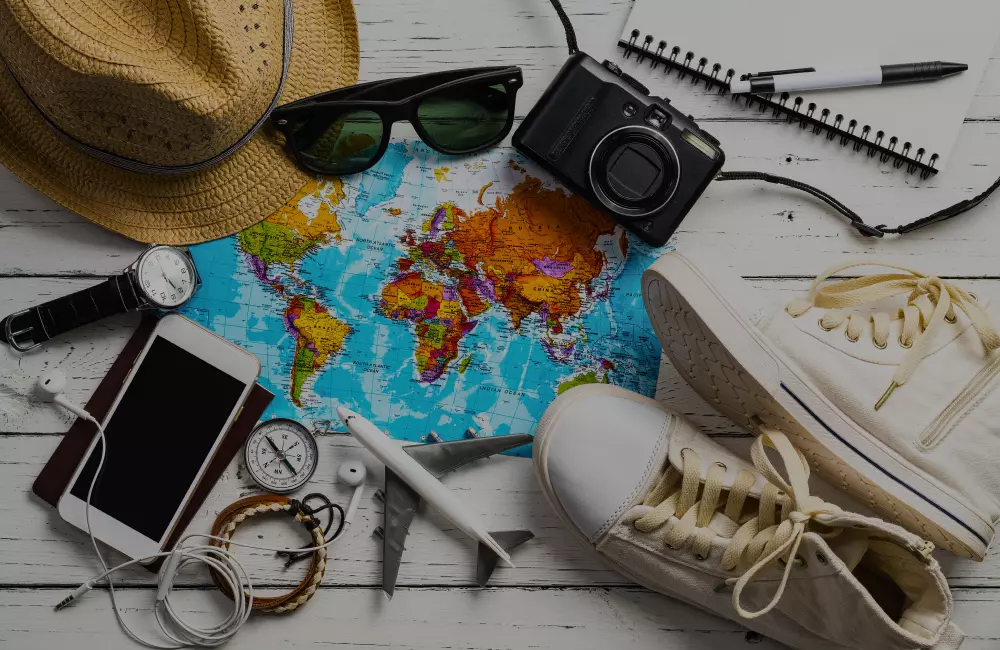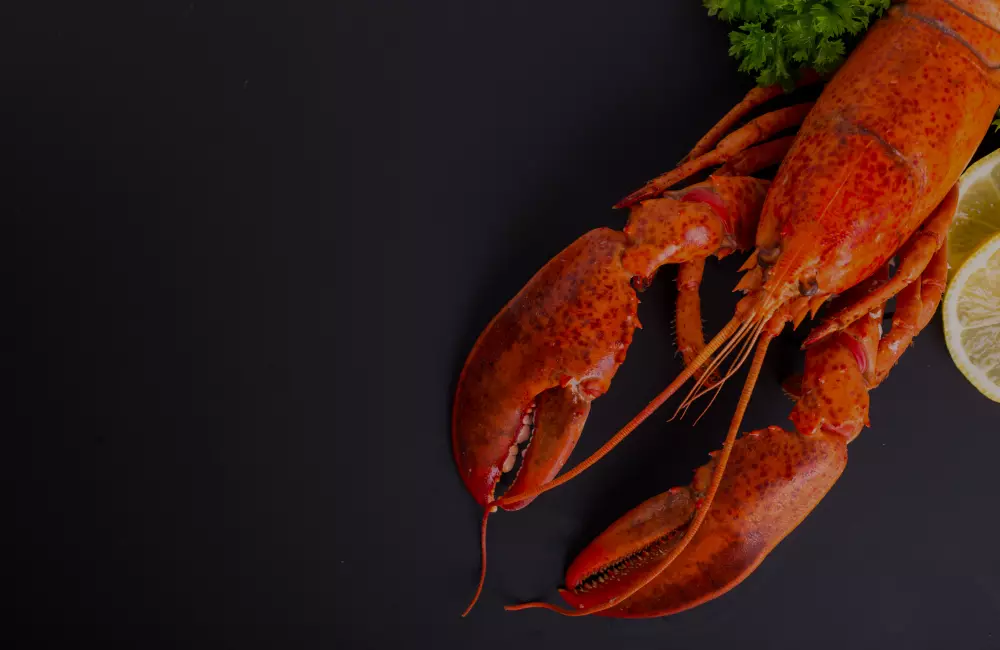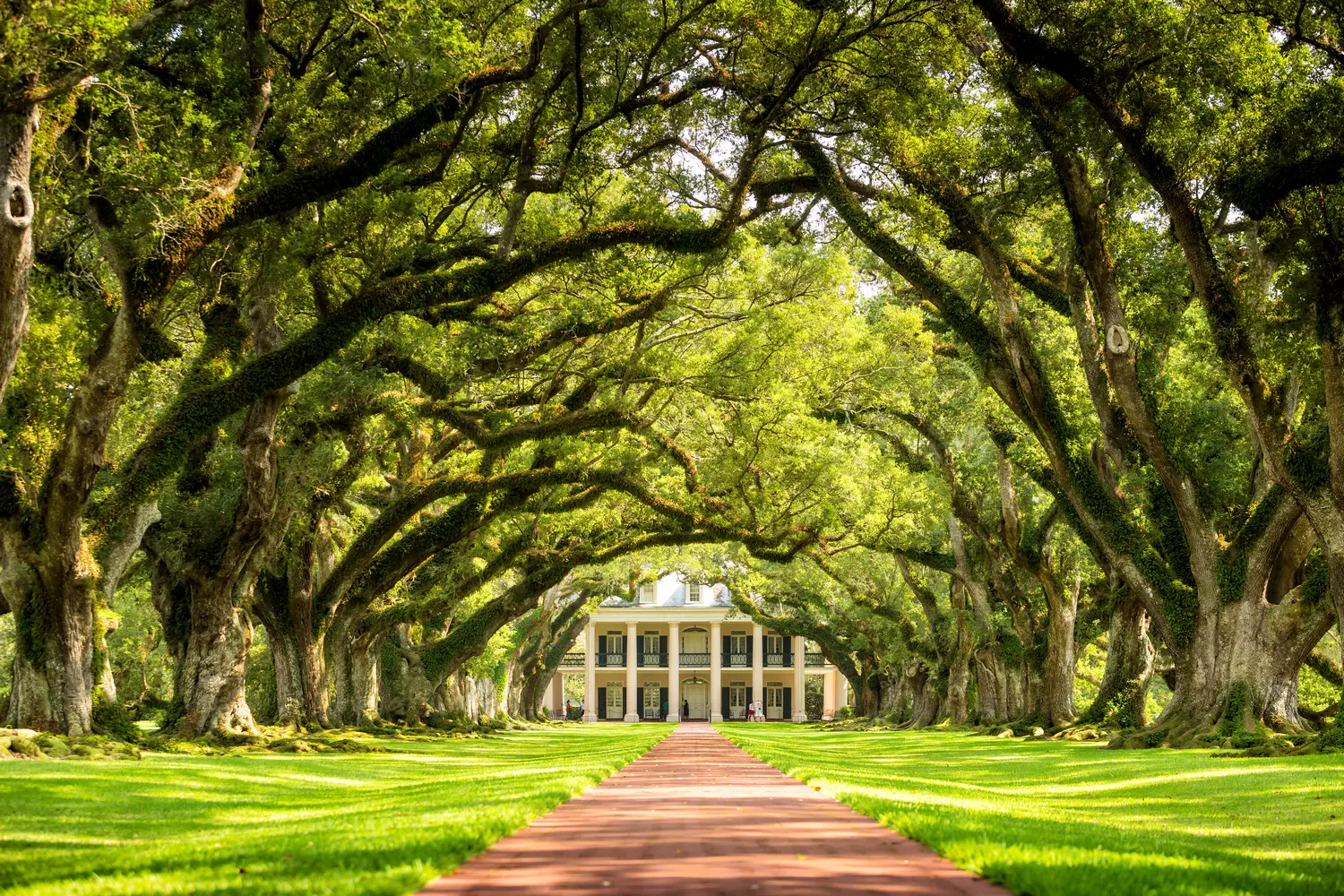America is a land of opportunity, and wine here has also found its way to the heart of the world. Although winemaking in the U.S. is relatively young compared to Europe, over the past half-century it has soared to incredible heights — especially in California, where every hill seems made for the vine.
Today, wine in the U.S. is not just a beverage — it's a cultural phenomenon, an economic engine, and a form of national self-expression. It's enjoyed in offices and at picnics, discussed in forums and wine clubs, stored in cellars and given as gifts. People travel from Europe to taste American Pinot Noir, and from Asia for California Cabernet.
What makes American winemaking so special? Perhaps it's the freedom to experiment, the traditions brought by immigrants from around the world, or the unique climate. Or maybe it's the passion of those who believe that every bottle tells a story — in the language of terroir, sun, and time.
This article is your guide to the world of wine in the U.S.: from historic wineries to exotic fruit wines in Florida, from the famed Napa Valley to the hidden gems of Oregon. Stay with us — it’s going to be delicious!

California is home to 150-year-old grapevines that survived the phylloxera epidemic — the very plague that decimated most European vineyards in the 19th century.
A Bit of History: How Wine Conquered the New World
Grapevines first arrived in North America with European colonizers in the 16th–17th centuries. However, the pioneers quickly faced harsh realities: the climate was different from Europe’s, native wild grape varieties were difficult to cultivate, and European vines died from diseases and pests. The development of winemaking was further hindered by a lack of knowledge, equipment, and infrastructure.
The situation began to change only in the 19th century. It was then that settlers from France, Italy, Germany, and other wine-making countries began to move to California. They brought vines, knowledge, experience, and a passion for the craft. By the end of the century, hundreds of wineries had appeared in the region, and California was gradually becoming a new hub of the wine world.
But history didn’t follow a straight path. In 1920, the infamous Prohibition went into effect, and nearly all wineries were forced to shut down. For 13 years, alcohol was banned, and only a few producers survived by making wine for religious purposes.
The industry began to revive after the ban was lifted, but the real turning point came in 1976. That year, the famous blind tasting in Paris took place, where wines from Napa Valley unexpectedly beat the acclaimed French favorites. The event caused a sensation and dramatically changed the reputation of American wine in the eyes of the world.
Fun fact: At that very tasting in Paris, the blind winners were Stag's Leap Wine Cellars (Cabernet Sauvignon) and Chateau Montelena (Chardonnay) — a true sensation of the century.
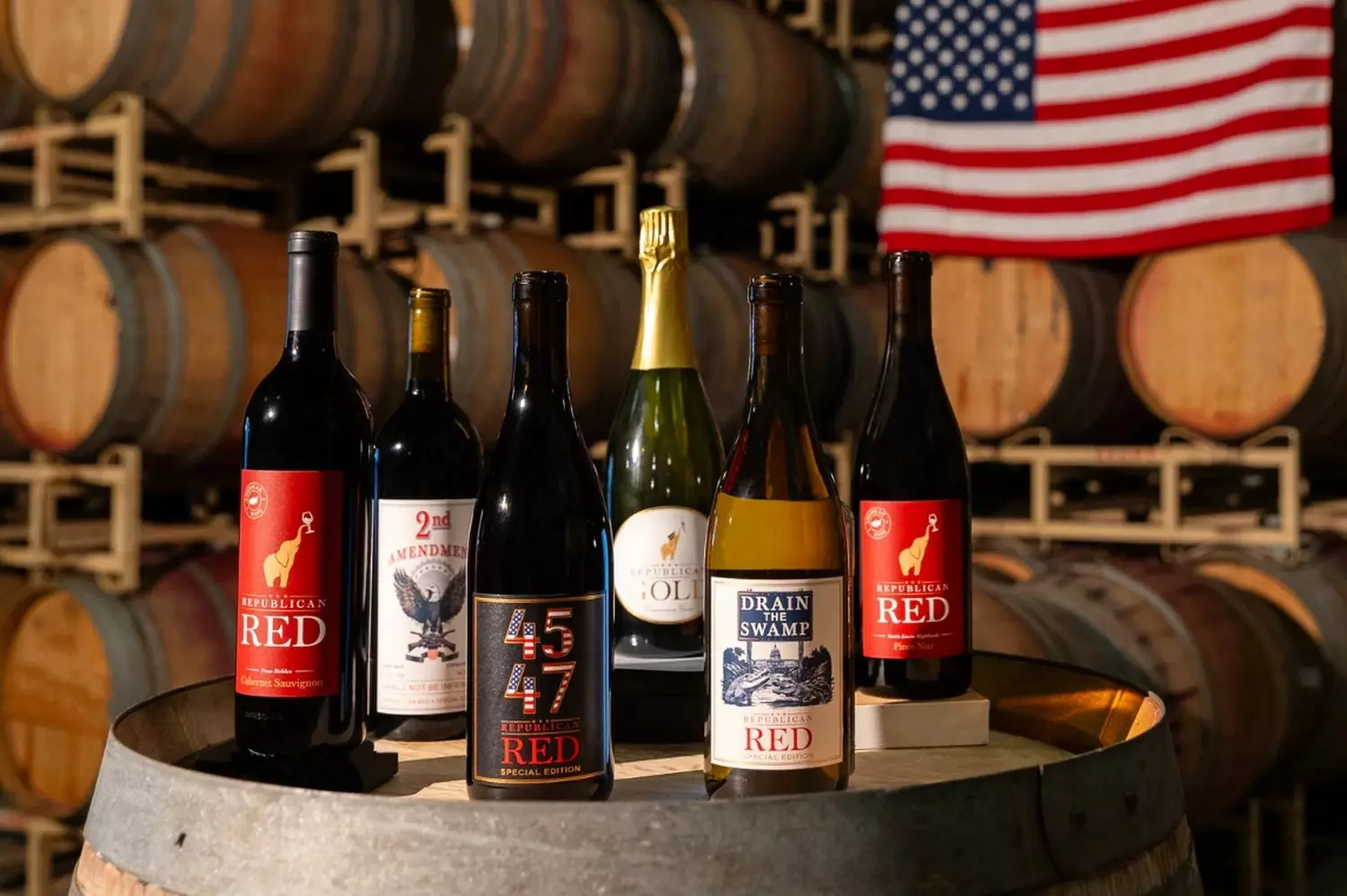
Why Are There So Many Wineries in the U.S.?
The secret is simple, yet multilayered: the country boasts over 250 certified wine regions (AVAs), and the climate and landscape are so diverse that it’s possible to find ideal conditions for growing almost any grape variety — from classic Cabernet to rare Albariño. The Pacific coast, highlands, deserts, and valleys — all provide winemakers with endless opportunities for creativity.
On top of that, Americans are a nation with entrepreneurship in their veins. Some continue family traditions started by a great-grandfather after the end of Prohibition. Others, inspired by a trip to Bordeaux, decide to build their dream winery in Oklahoma. And some launch a wine startup from a garage in Santa Barbara. This unique mix of freedom, passion, science, and a bit of daring has made the U.S. one of the most dynamically developing wine countries in the world. And every winemaker tells a different story — one of love for the land, patience, and belief in their bottle.
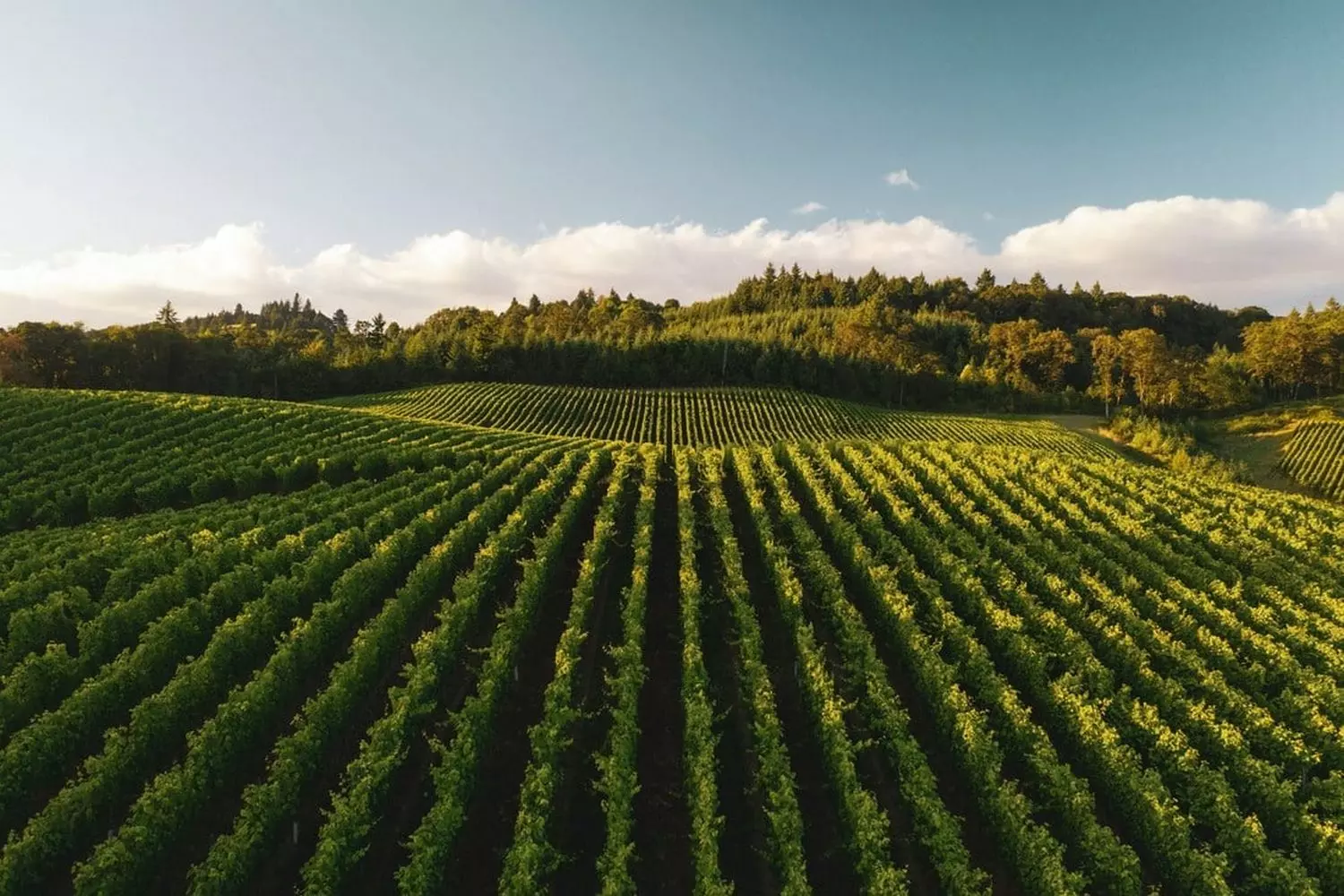
Key Wine Regions of the USA
American winemaking is not only about California. The country is home to numerous regions, each adding its own note to the symphony of flavors. From the misty valleys of Oregon to the rolling landscapes of New York—every corner offers unique terroirs, grape varieties, and production styles.
- 01. California
Popular appellations: Napa, Sonoma, Russian River Valley, Pacific Coast
Main varieties: Cabernet Sauvignon, Chardonnay, Pinot Noir, Zinfandel
California produces over 80% of all American wine, with a climate perfect for diverse styles.
- Napa Valley
Famous for premium Cabernet and Merlot. Wineries like Opus One and Stag’s Leap Wine Cellars have long conquered the world. - Sonoma
More diverse: known for excellent Pinot Noir and Chardonnay, as well as experiments with Italian and Spanish grapes. - Russian River Valley
A mecca for lovers of cool-climate Pinot Noir and sparkling wines in the Champagne style.
- 02. Oregon — the kingdom of Pinot Noir
Popular appellations: Willamette Valley, Rogue Valley
Main varieties: Pinot Noir, Pinot Gris, Chardonnay
Oregon is the “American Burgundy” with a cool climate ideal for the delicate Pinot Noir.
- Willamette Valley
The most renowned region, with wineries like Domaine Drouhin and Eyrie Vineyards producing elegant, mineral-driven wines. - Rogue Valley (bordering California)
Known for bold Syrah and Cabernet.
Why try it? Oregon Pinot Noirs tend to be lighter and more acidic than their Californian counterparts, appealing to fans of European style.
- 03. Washington — power and balance
Popular appellations: Columbia Valley, Walla Walla, Yakima Valley
Main varieties: Cabernet Sauvignon, Merlot, Syrah, Riesling
Washington is the second-largest wine-producing state after California, with a more continental climate (hot summers, cold winters).
- Columbia Valley
The main region, known for rich red wines (Cabernet, Syrah) and fresh whites (especially Riesling). - Walla Walla
Famous for powerful, high-alcohol wines.
Regional feature: Wineries like Chateau Ste. Michelle successfully blend European elegance with American fruit-forward style.
- 04. New York — Rieslings and innovation
Popular appellations: Finger Lakes, Long Island, Hudson River
Main varieties: Riesling, Cabernet Franc, Gewürztraminer
New York is the East Coast’s wine leader, and its wines are often underrated.
- Finger Lakes
“The capital of American Riesling”: known for wines with vibrant acidity and citrus notes (try Dr. Konstantin Frank). - Long Island
With oceanic influence, it's well-suited for Bordeaux varieties (Merlot, Cabernet Franc).
Trend: Winemakers are experimenting with natural wines and hybrid grapes (such as Vidal Blanc).
- 05. Texas — the dark horse of American wine
Popular appellations: High Plains, Texas Hill Country
Main varieties: Tempranillo, Cabernet Sauvignon, Viognier
Texas is the fastest-growing wine region in the U.S., where the hot climate produces bold, ripe wines.
- High Plains
High-altitude region with large temperature swings—perfect for sugar-acid balance. - Texas Hill Country
Known for intriguing Tempranillo and Viognier.
Note: Texas wines are often compared to Spanish and Italian wines due to similar conditions.

What Wines Are Produced in the USA?
The USA produces virtually the entire spectrum of wines — from Old World classics to true exotics. American winemakers are not afraid to experiment with grape varieties, techniques, and even raw materials, creating both traditional blends and unique signature wines. Here's a brief overview by type.
Red wines: from powerful Californian to elegant Oregonian
- 01. Cabernet Sauvignon — the king of Napa
- Regions: California (Napa, Sonoma), Washington
- Style: rich, with notes of blackcurrant, vanilla, and tobacco.
- Feature: Californian Cabernets are often aged in new oak barrels, which gives them power and sweet spice notes.
- 02. Zinfandel — the American classic
- Regions: California (Lodi, Russian River Valley)
- Style: berry-like (raspberry, blackberry), with notes of pepper and licorice.
- Highlight: ranges from light and fruity (white zinfandel) to full-bodied (red zinfandel).
- 03. Pinot Noir — Oregonian elegance
- Regions: Oregon (Willamette Valley), California (Santa Barbara)
- Style: cherry, strawberry, mushroom notes — closer to Burgundy style than Californian versions.
- 04. Syrah / Shiraz — power and spice
- Regions: California (Pacific Coast), Washington
- Style: black pepper, dark fruits, chocolatey notes.
- 05. Merlot — softness and roundness
- Regions: California, Washington
- Style: plum, cherry, cocoa — less tannic than Cabernet.
- 06. Tempranillo — a Spanish touch in Texas
- Regions: Texas (High Plains)
- Style: cherry, tobacco, vanilla — reminiscent of Rioja, but with higher alcohol content.
White wines: from buttery Chardonnay to crisp Rieslings
- 01. Chardonnay — California gold
Regions: California (Napa, Sonoma)
Style: Rich (oak-aged): pineapple, vanilla, buttery texture. Chilled (stainless steel): apple, citrus, minerality. - 02. Riesling — acidity and aroma
- Regions: New York (Finger Lakes), Washington
- Style: Dry: lime, green apple, minerality. Off-dry: peach, honey, floral notes.
- 03. Sauvignon Blanc — grassy freshness
- Regions: California, Washington
- Style: grapefruit, gooseberry, freshly cut grass.
- 04. Viognier — exotic and floral
- Regions: California, Texas
- Style: apricot, jasmine, peach pit.
- 05. Pinot Gris / Grigio — light and fruity
- Regions: Oregon, California
- Style: pear, melon, honey — usually dry but with soft acidity.
Rosé and sparkling wines
- 01. Zinfandel – sweet hit
Region: California
Style:strawberry, watermelon, low tannins – perfect for summer. - 02. Sparkling wines (Méthode Champenoise)
Regions: California (Anderson Valley), New York
Style: from brut with apple notes to sweet cuvées.
Unusual and hybrid varieties
- Cabernet Franc (New York, Finger Lakes) — lighter than Cabernet Sauvignon, with green pepper notes.
- Gewürztraminer (Michigan, Finger Lakes) — spicy, with aromas of rose and lychee.
- Vidal Blanc (Virginia, Canada) — used for ice wines.
Which wine to choose?
- Love powerful wines? Cabernet (California), Syrah (Washington).
- Prefer lightness? Pinot Noir (Oregon), Riesling (New York).
- Looking for something exotic? Viognier (Texas), Gewürztraminer (Michigan)
American winemakers aren’t afraid to experiment, so here you can find everything — from traditional Bordeaux blends to organic “natural” wines. The main thing is — to explore!

Why California Wine Became Cult Status
California is the Mecca of American winemaking. This is where the brands that changed the global market were born, and the terroirs of Napa and Sonoma have become iconic. But what made California wine a true icon?
- 01. Ideal climate — sun, ocean, and mountains
California has unique natural conditions for winemaking:
- Long growing season
Warm days and cool nights allow grapes to accumulate sugar while preserving acidity. - Diverse microclimates
From hot Napa to the cool Russian River Valley, where both cabernet and the delicate pinot noir thrive. - Pacific Ocean influence
Fog and breezes cool the vineyards, slowing ripening and adding complexity to the wines.
- 02. Soils — geological wealth
California has dozens of soil types, including volcanic, limestone, and clay. For example:
- Napa
Rich in gravel, similar to Bordeaux — ideal for cabernet. - Sonoma
Diverse soils create variation even within a single grape variety.
- 03. Technology and innovation
California winemakers were the first to adopt many groundbreaking techniques:
- Controlled fermentation
Use of stainless steel tanks and precise temperature settings. - Modern oak aging
Experimentation with barrel toasting and fractional blending. - Organic and biodynamic winemaking
A growing trend (e.g., Bonterra winery).
- 04. Wine styles for every taste
- Powerful reds
Cabernet, zinfandel, syrah with rich fruity notes. - Elegant whites
Chardonnay (both buttery and mineral), sauvignon blanc. - Rosé and sparkling
From light White Zinfandel to premium Champagne-style cuvées (Schramsberg).
- 05. Wine tourism — a culture of hospitality
California is the only region in the U.S. where wine tours are as popular as in Europe. Wineries offer:
- Tastings with vineyard views
For example, Castello di Amorosa — a Tuscan-style castle. - Gastronomic pairings
Local cheeses, oysters, farm-to-table produce. - Exclusive wines
Many boutique wines are only sold on-site.
- 06. A blend of tradition and freedom
Unlike strict European appellations, California winemakers can:
- Blend grapes from different regions.
- Experiment with aging and fermentation.
- Create signature blends (e.g., Opus One — a joint project of Baron Rothschild and Robert Mondavi).
- 07. The philosophy of winemaking
In California, wine is more than just a product. It's a philosophy of slow life, respect for nature, and appreciation of flavor. It’s common to find wineries where everything is done by hand — from harvesting to labeling. - 08. Innovation and sustainability
Many wineries follow organic and biodynamic practices. They use solar panels, water recycling, minimal environmental impact, and maximum respect for nature. - 09. Global recognition
California wines are served in the world's finest restaurants, win international awards, and appear on the tables of royalty. The 1976 Judgment of Paris opened the door — and it hasn’t been shut since.
What’s next?
California continues to amaze:
- Revival of old vines
Vineyards with a century of history produce wines with unique concentration. - Alternative varieties
Rising interest in nebbiolo, grenache, and even Georgian saperavi. - Climate challenges
Adapting to droughts and wildfires through new technologies.
California wines offer power, fruitiness, and balance that have even charmed Old World wine snobs. They are perfect for those who enjoy:
- Rich reds with blackberry and vanilla notes.
- Fresh whites with tropical hints.
- Experiments — from appellation-defying blends to signature creations.
These are wines you don’t just drink — you experience them.

Top 10 Most Popular Wineries in the USA
American winemaking is renowned not only for its scale, but also for its diversity of styles. This ranking features wineries worth visiting (or at least tasting) if you want to understand the flavor of the USA.
- 01. Robert Mondavi Winery (Napa, California)
Why it's in the top: A legendary winery that turned Californian wine into a global brand. Robert Mondavi introduced the concept of Fumé Blanc (dry Sauvignon Blanc) and proved that Napa can compete with Bordeaux.
What to try: Cabernet Sauvignon Reserve, Fumé Blanc. - 02. Opus One (Napa, California)
Why it's in the top: A joint venture between Baron Philippe de Rothschild (Château Mouton Rothschild) and Robert Mondavi. Its hallmark is a powerful Bordeaux blend often called “America’s First Growth.”
What to try: Opus One (Cabernet + Merlot + Malbec). - 03. Stag’s Leap Wine Cellars (Napa, California)
Why it's in the top: Their Cabernet won the "Judgment of Paris" in 1976, forever changing the status of American wines.
What to try: CASK 23 (premium Cabernet from the award-winning vineyard). - 04. Domaine Drouhin (Oregon)
Why it's in the top: The French Drouhin family from Burgundy created benchmark Pinot Noirs in Oregon with refined minerality.
What to try: Pinot Noir Laurène. - 05. Ridge Vineyards (Santa Cruz, California)
Why it's in the top: A cult winery that produces one of the world’s best Zinfandels — the iconic Monte Bello.
What to try: Monte Bello (Cabernet) and Lytton Springs (Zinfandel). - 06. Chateau Ste. Michelle (Washington)
Why it's in the top: The largest producer in the state, combining accessibility and quality. Their Rieslings are a benchmark of the New World.
What to try: Eroica Riesling (in collaboration with Germany’s Dr. Loosen). - 07. Screaming Eagle (Napa, California)
Why it's in the top: The most famous American “cult wine.” Small batches, prices from $3,000 per bottle, and the status of a “wine unicorn.”
What to try: If you're lucky — Cabernet Sauvignon. - 08. Duckhorn Vineyards (Napa, California)
Why it's in the top: One of the first wineries to elevate Merlot to a premium status in the US.
What to try: Three Palms Merlot (Wine of the Year by Wine Spectator in 2017). - 09. Dr. Konstantin Frank (New York, Finger Lakes)
Why it's in the top: A pioneer of East Coast winemaking. Proved that world-class Rieslings can be made in cold climates.
What to try: Dry Riesling. - 10. Tablas Creek (Pacific Coast, California)
Why it's in the top: The best American project in the Châteauneuf-du-Pape style (co-owned by the Perrin family from Château de Beaucastel).
What to try: Esprit de Tablas (a blend of Grenache, Syrah, and Mourvèdre).
Why are these wineries so famous?
- History: Many of them changed the wine map of the U.S. (like Mondavi or Stag’s Leap).
- Quality: Wines regularly score 95+ points from Parker and Wine Spectator.
- Cult status: Some bottles (like Screaming Eagle) are collected as works of art.
What’s next?
New names are gaining popularity:
- Harlan Estate (“the Petrus of California”).
- Kistler Vineyards (premium Chardonnays).
- Sine Qua Non (signature wines by Manfred Krankl).
Try at least one bottle from this list — and you’ll understand why American wines are so loved around the world.
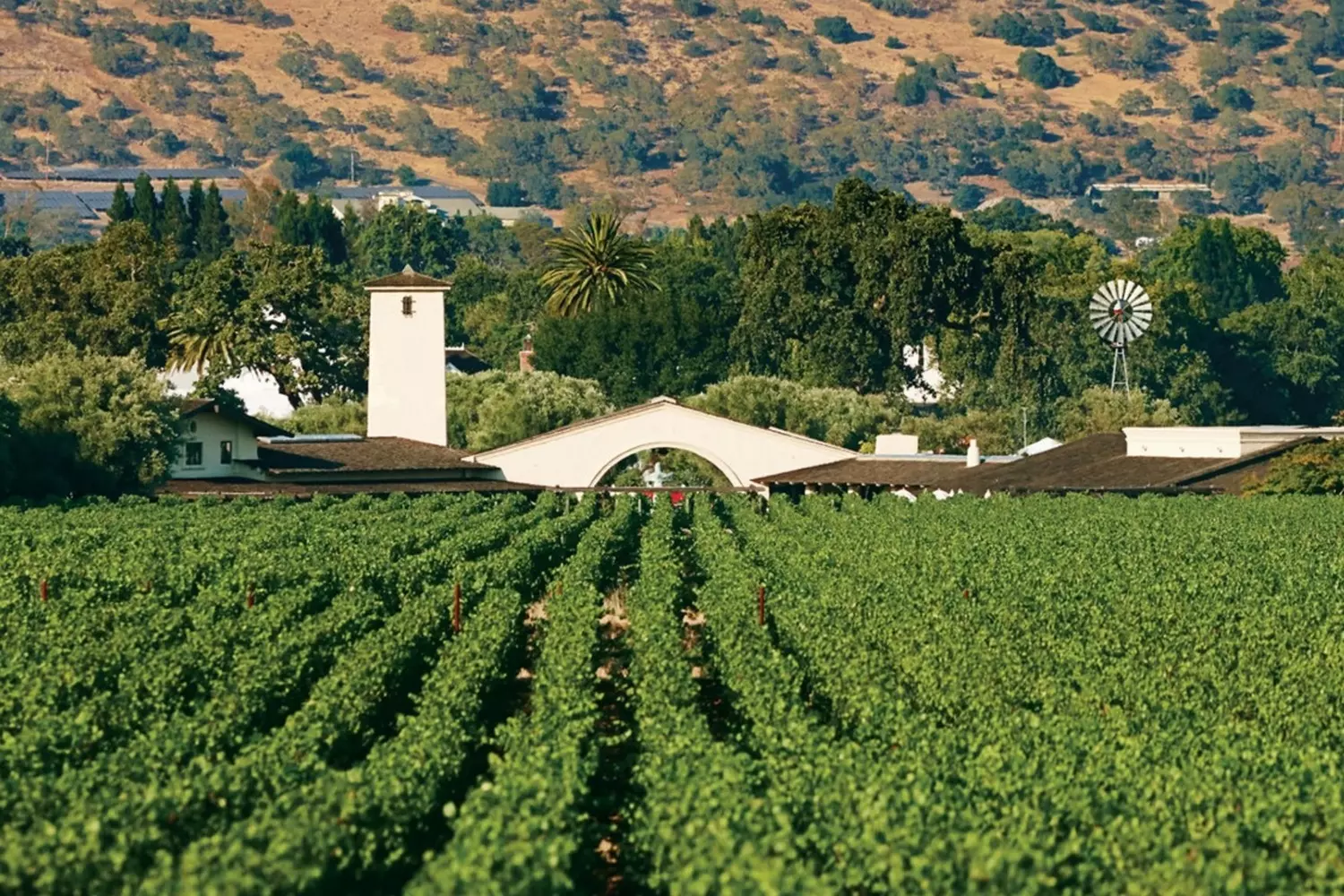
Wine from the Tropics: How Is It Possible?
Florida, despite its reputation as a beach paradise and a mecca for vacationers, is also becoming one of the most unusual and unique centers of wine production. Unlike classic wine regions such as California or France, Florida wineries experiment with tropical fruits, giving local wines a distinctive character and unique flavor.
Florida wine is a true discovery for lovers of unusual tastes. Due to the hot and humid climate, it is impossible to grow traditional grape varieties like Cabernet or Chardonnay in Florida. However, local winemakers have found a solution — they began using tropical fruits that are perfectly suited to the local climate. Instead of traditional vineyards, you'll find plantations of mango, guava, passion fruit, lychee, sapodilla, and other exotic fruits.
Such winemaking is unusual both for Americans and for the international audience. Wines made from these fruits offer unpredictable, vibrant aromas and rich flavor profiles that transport the imagination into Florida’s tropical atmosphere.
Florida and Its Wine: What You Should Know
- Unique Wine Varieties
Tropical fruits used in Florida wineries give the drinks unique notes — the sweetness of mango, the tartness of passion fruit, or the freshness of lychee. Each local wine becomes an expression of the region's character and climate. - Florida Wineries
Although the state is not a traditional winemaking hub, there are several unique wineries here, such as Schnebly Redland’s Winery, which attract tourists not only with unusual wines but also with atmosphere. These places offer a true gastronomic adventure. - Ecological Features of the Region
Florida is known for its eco-friendly practices, which are also reflected in winemaking. Many local wineries aim to operate with minimal environmental impact, making their products organic and more harmonious with nature.
Interesting Facts About Florida Wine
- Florida wines pair excellently with local cuisine — seafood dishes, tropical fruits, and spices.
- Unique recipes, such as lychee wine, are gaining popularity outside the state, offering gourmets a fresh take on wine culture.
- Some Florida wineries offer tastings right in the middle of plantations, allowing guests to experience the atmosphere of a real wine farm, breathe in the aroma of fruits, and enjoy the view of tropical nature.
Schnebly Redland’s Winery — A Tropical Fairy Tale in Florida
Schnebly Redland’s Winery is not just a winery — it’s a real discovery for all lovers of unusual wines. This unique wine complex, located in the southern part of Florida near Miami, has become a true gem for those seeking a non-traditional wine experience. Unlike classic wine regions, grapes are not grown here — instead, wine is produced from tropical fruits such as mango, guava, and passion fruit, creating incredibly unique and rich flavors.
Here are some interesting facts about Schnebly Redland’s Winery:
- Architecture and Atmosphere
The winery is built in the style of a tropical hacienda, creating an atmosphere that perfectly matches Florida’s surroundings: lush plantations, palm trees, and exotic nature. - Lychee Wine
One of the most popular products is the signature lychee wine. This exotic fruit gives the drink a unique taste, captivating with its lightness and aroma. It’s a real discovery for those used to classic wines. - Tours and Events
In addition to tastings, Schnebly Winery hosts various events — from winery tours to private parties and weddings. This place attracts not only wine connoisseurs but also those who want to spend an unforgettable time surrounded by tropical nature.
If you've already been to wineries around the world and think you’ve seen it all — this experience will definitely surprise you. Florida wine is something truly unique, and Schnebly Redland’s Winery will give you a whole new perspective on winemaking.
What’s Next?
Florida’s wineries aren’t limited to Schnebly Winery — there are several other unique places worth visiting for wine and exotic lovers.
- Florida Orange Groves Winery
This winery specializes in wines made from citrus fruits such as oranges, lemons, and grapefruits. Wine here is produced using fresh fruit, giving the drinks a fresh and light flavor. It’s the perfect place for those looking to try something unusual and refreshing. - San Sebastian Winery
Located in the historic center of St. Augustine, one of the oldest American colonies. This winery is known for its exquisite wines made from local grape varieties, as well as unique white and red wines prepared using traditional European methods. San Sebastian Winery offers guests not only tastings but also production tours. - Lakeridge Winery & Vineyards
The largest winery in Florida, located in the center of the state. This place is famous for its red and white wines, as well as excellent sparkling and bubbly drinks. Lakeridge frequently hosts festivals and wine events, offering a unique opportunity to enjoy Florida wine in a picturesque setting.
Each of these wineries is not just a tasting destination but a true cultural experience, allowing visitors to explore the specifics of Florida winemaking and its exotic features.

Wine Tours in the USA
The USA is a country where winemaking has become not just a tradition, but a true art form. From the sunny hills of California to the tropical greenery of Florida, each wine region in America offers unique experiences. Wine tours across the USA are not just about tasting beverages; they are about immersing yourself in the culture, history, and philosophy of each region, with the chance to see how some of the best wines in the world are created.
Napa and Sonoma: Symbols of American Winemaking
Napa and Sonoma are two of the most prestigious and well-known wine regions in the USA. These areas are famous not only for their wines but also for their stunning landscapes, traditions, and the rich history of winemaking. Why Napa and Sonoma are the number one choice:
- Long History of Winemaking
Wineries in Napa have been around for over two hundred years, producing some of the best wines in the USA. - Perfect Climate Conditions
The local climate — sunny days and cool nights — is ideal for viticulture, allowing for the cultivation of high-quality grape varieties. - Scenic Landscapes
Mountain ridges, valleys, and beautiful vineyards create an amazing atmosphere, making relaxation a true pleasure. - Traditions Passed Down Through Generations
The wineries here are often family-owned, preserving unique winemaking methods and recipes handed down from generation to generation.
What do wine tours in Napa and Sonoma include?
- Wineries such as Robert Mondavi, Stag’s Leap, Opus One
World-renowned brands producing premium wines recognized in international competitions. - Production
Get to know the production processes, unique winemaking methods, and the chance to purchase exclusive bottles. - Small Family Wineries
These wineries offer a more intimate experience, where you can not only taste their products but also learn about their family traditions and winemaking history. Many such wineries offer exclusive tours of the vineyards and even allow you to participate in the harvest. - Wine Tastings with Sommeliers
Expert tastings where sommeliers will not only talk about wine varieties but also help you understand which wines pair best with different dishes. Many wineries offer wine pairings with gourmet foods like cheese, chocolate, olive oil, and other products that enhance the flavors of the wines. - Vineyard Walks
The vineyards of Napa and Sonoma are not only places for grape harvesting but also true scenic gems. Walking tours give you the chance to enjoy the views and learn about the grapevine growing and care process. Some wineries organize photoshoots against the backdrop of the vineyards, allowing you to capture moments of this unique journey. - Exotic Tours
Exclusive events, such as parties, special tastings, or "wine dinners," where guests can enjoy not only wines but also local cuisine prepared by a chef. Local wineries also offer participation in wine festivals, letting you experience the atmosphere of a real celebration and meet the producers personally. - Unique Format Tours
Private guided tours, helicopter flights, and other options for those seeking something more thrilling.
Wine tours in Napa and Sonoma are the perfect way to enjoy not only fantastic wines but also the beauty of nature, the unique atmosphere, and an immersion in the region's history and culture. Each winery is a special place that opens its doors to guests and offers unforgettable experiences.
Where else can you go?
- Oregon: Refined Pinot Noir in Willamette Valley
If you're looking for a place to relax away from the crowds, Oregon is an excellent choice. The Willamette Valley, known for its Pinot Noir, is perfect for wine tours. This region is valued for its calm atmosphere, clean air, and nature. The wines here are not as "mass-produced" as in California and often offer something new for wine experimenters. Seasonal tourism in Oregon is especially great in the fall when the vineyards turn into golden and red carpets. - Washington: Winemaking Traditions in the Northwest
Washington is the second-largest wine state in the USA. It produces many types of grapes, and its local Cabernet Sauvignon and Riesling are especially famous. Wine tours through this region, particularly in the Columbia Valley, offer a unique atmosphere — from visiting large wineries to more intimate ones hidden in picturesque corners. This place is perfect for those who enjoy not only learning about wine but also the region itself. - Florida: Tropical Exoticism in a Glass
Not everyone knows that even in sunny Florida, there are wineries that attract tourists. Instead of the usual grape varieties, this region produces wine from exotic fruits like mango, guava, passionfruit, and lychee. Wineries such as Schnebly Winery in South Florida offer tastings with unusual flavors that can't be found in classic winemaking countries. Wine tours in Florida are the perfect way to discover not only wines but also the exotic culture of the region. - New York: Finger Lakes and Beyond
New York, despite its popularity in other fields, also has a rich winemaking tradition. The Finger Lakes region is a wonderful place for wine tours, especially for those who appreciate white wines. The wines here are known for their freshness and lightness, making them ideal for hot summer days. In addition to tastings, many wineries offer walks around picturesque lakes and vineyard tours. - Texas and Virginia: New Horizons for Wine Travelers
If you want to see how new winemaking regions are developing in the USA, Texas and Virginia should be on your radar. Wineries in these states have been gaining popularity in recent decades and are now among the most promising regions. Virginia is known for its red wines, while Texas offers interesting white varieties. Wine tours here are less crowded than in California but allow you to enjoy a more peaceful atmosphere and taste wines that are just beginning to conquer the global market.
How does a tour work?
A typical wine tour in the USA may include:
- Transfer to and from the winery.
- Guided tours of vineyards and production facilities.
- Wine tastings with sommeliers, where guests can learn about the winemaking process and taste the best varieties.
- Gourmet pairings: cheese, chocolate, olive oil, fruits — everything that pairs perfectly with wine.
- Visits to wine bars and restaurants that serve dishes paired with local wines.
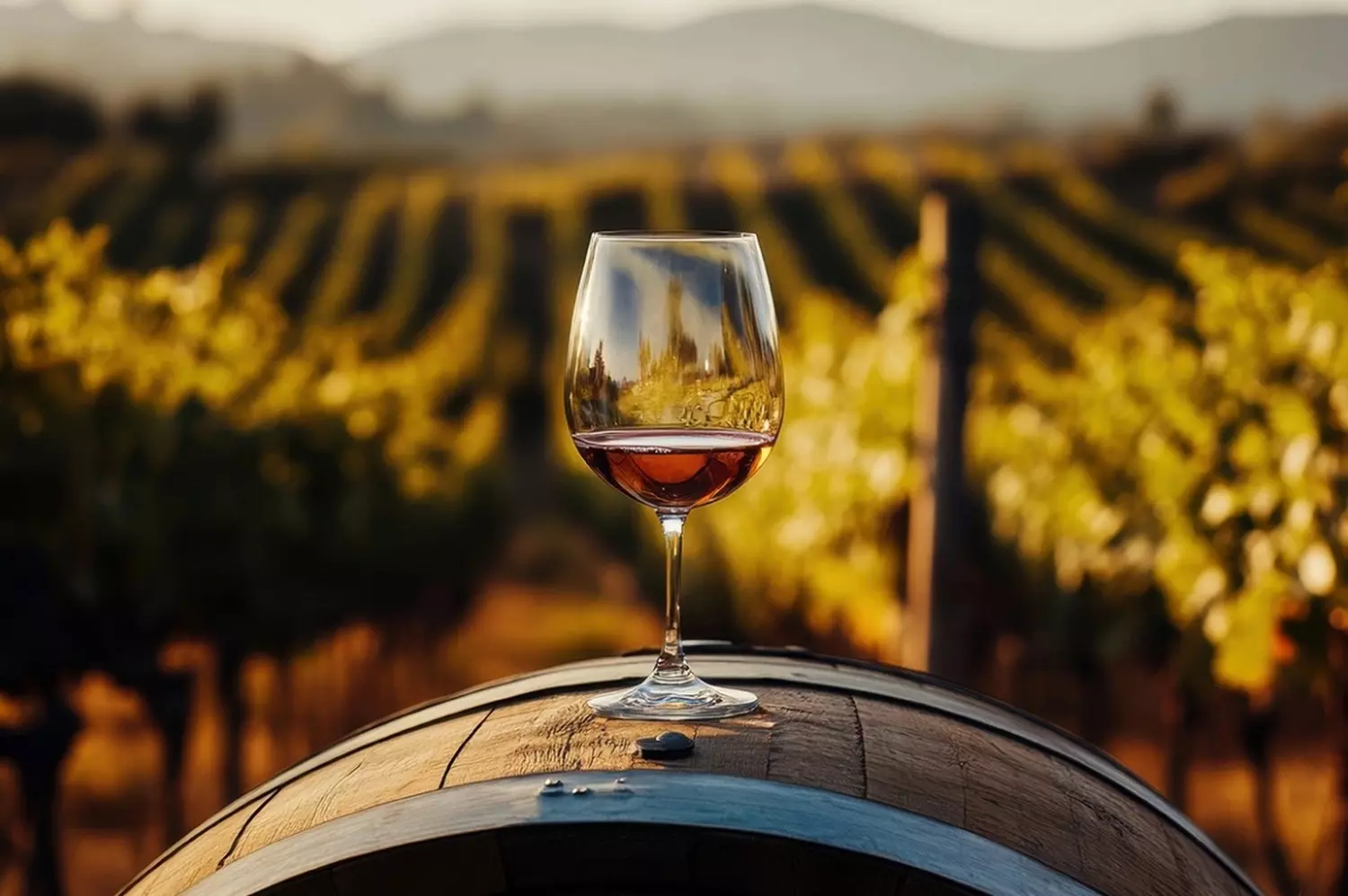
Book a Wine Tour Across the USA with American Butler
American winemaking is not just Napa and a glass of Cabernet. It’s history, traditions, culture, architecture, gastronomy, travel, and people. It’s the opportunity to discover something new and amazing, even if you’ve already been to France, Italy, and Spain.
American Butler organizes wine tours across the USA, ensuring maximum comfort, individual approach, and personalized itineraries. We know the best wineries that produce the finest wines and are ready to provide you with unique experiences. From tours of Napa starting in San Francisco to off-the-beaten-path tours in Florida, each of our tours will be unforgettable. Discover American wine with us!























